Huang Shan Mao Feng Green Tea
$18.80 – $38.90Price range: $18.80 through $38.90
Description
| Origin: | Da Guyun village, Shexian(歙县), Huangshan, Anhui Province, China |
|---|---|
| Season: | Spring Tea |
| Harvest Date: | April 12, 2025 |
| Dry Leaf: | Wavy leaves which come to a sharp point at the tip,
fat bud with one or two leaves, covered with soft white fuzz |
| Aroma: | Floral, chestnut, stir-fried bean aroma |
| Liquor: | Light apricot color |
| Taste: | Smooth and mellow, sweet and refreshing;
no hint of astringent; with long-lasting sweet aftertaste |
| Tea Bush: | Huangshan large-leaf tea bush species |
| Tea Garden: | Dailing Tea Garden |
| Caffeine: | Low caffeine (less than 10% of a cup of coffee) |
| Storage: | Store in airtight, opaque packaging; keep refrigerated |
| Shelf Life: | 18 Months |
 |
Cup Method |
 |
Chinese Gongfu Method |
 |
Teacup: 8.8oz / 250ml |  |
Gaiwan: 3.8oz / 110ml |
 |
185℉ / 85℃ |  |
185℉ / 85℃ |
 |
2 Teaspoons / 2g Tea |  |
4g Tea |
 |
Brewing time: 3 – 5 mins |  |
4 steeps: rinse, 30s, 45s, 70s, 100s |
Dailin Tea Garden is located in Da Guyun village in Huang Shan. Da Guyun originally got its name from the surrounding mountains and valleys. The tea garden lies in remote parts of the high mountains, where the air is clean, the climate is moist and the four seasons are distinct. The only crops grown by farmers in this area are tea and chrysanthemums.

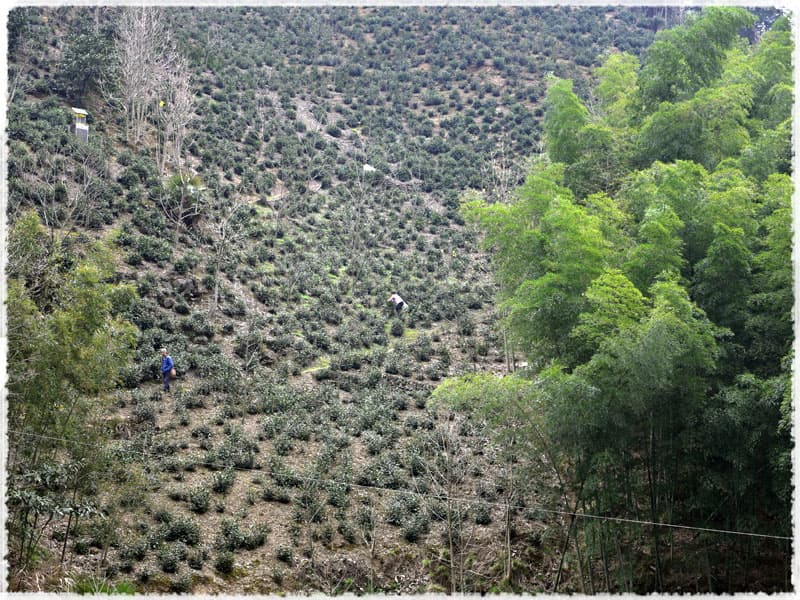
Tea farmers brave the steep slope of the hill to pick tea. It’s an extremely difficult task.
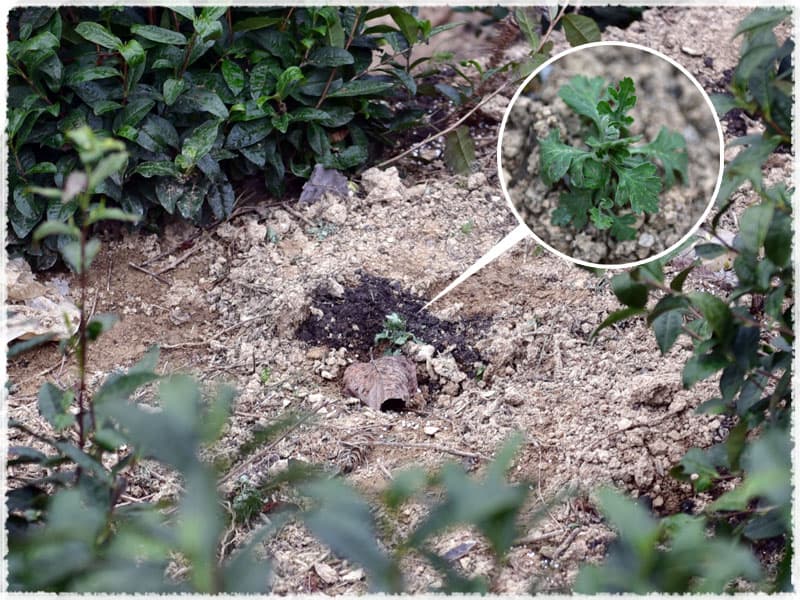
Chrysanthemum seedling grows among tea trees. Farmers in this area only grow tea and chrysanthemums.
Mr Ke, who was born and grown up in the tea village, has been in tea industry for more than 40 years. He started off early in his childhood, following his parents as they harvested tea. From then on, he aspired to become an excellent tea maker. He started to learn the art of tea-making when he was 15, and quickly mastered the traditional skill of making Huang Shan Mao Feng tea. “I will devote my whole life to tea and the innocent tea village” said Mr. Ke.
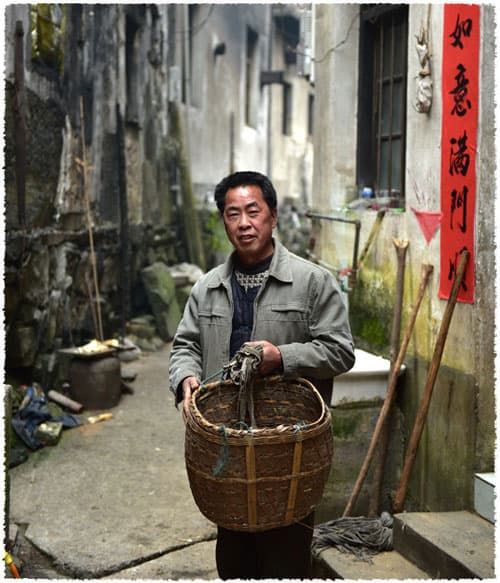
Shexian County (歙县), also known as She County, is a famous historic and cultural city in the south of Anhui Province. It is geographically located at 118°15′E to 118°53′E, 29°30′N to 30°7′N. The county is a part of Huangshan City and covers an area of 2122 square kilometers.
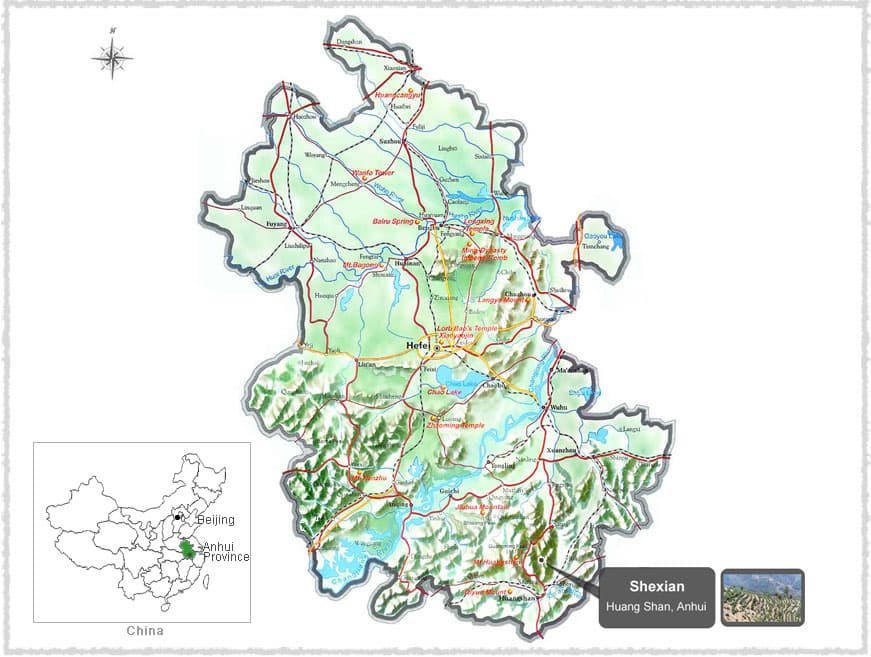
These fresh tea leaves come from tea trees of Huangshan’s large-leaf species, which were originally distributed in Huang Shan. Its characteristics include early sprouting, dense sprouting, strong buds, and abundant fuzz. This species puts forth many buds in the spring and has strong resistance to severe cold in the wintertime.
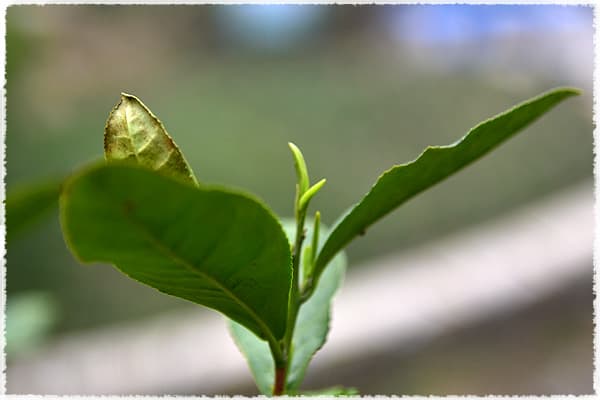
A sample of one bud with two leaves of spring tea from this species contains about 5.2% amino acid, 24.50% tea polyphenols, 138.04mg/g of catechin and 44.03% aqueous extract.
Since this tea should ideally be grown in the high mountains, with cool and cloudy weather, the area around Mt. HuangShan in Anhui has been used to cultivate high quality tea for centuries. Modern HuangShan MaoFeng tea, however, traces its roots back to the late 1800’s when a merchant called Xie Zheng An, who fled the war at the time, decided to setup a family tea business at HuangShan Mountain. Named after where it was produced – HuangShan mountain, and its appearance – looking like a fur covered mountain peak, the tea his family produced quickly became very popular in China due to its excellent quality, great taste and enticing aroma.
Additional information
| ounce | 4 oz(113g), 8 oz(227g) |
|---|
Related Products
Related products
-
Sale!

Jasmine Dragon Pearls Green Tea
$15.80 – $28.80Price range: $15.80 through $28.80 Select options This product has multiple variants. The options may be chosen on the product page -
Sale!

Award Winning Fengqing Dragon Pearl Black Tea
$12.20 – $25.20Price range: $12.20 through $25.20 Select options This product has multiple variants. The options may be chosen on the product page -
Sale!
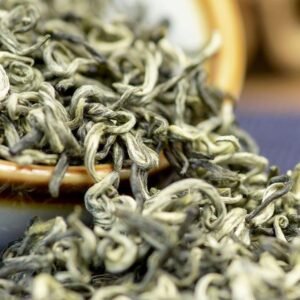
Premium Bi Luo Chun Green Tea (Pi Lo Chun)
$22.90 – $42.90Price range: $22.90 through $42.90 Select options This product has multiple variants. The options may be chosen on the product page -
Sale!

Award Winning Organic Superfine Dragon Well Long Jing Green Tea
$22.90 – $42.90Price range: $22.90 through $42.90 Select options This product has multiple variants. The options may be chosen on the product page





Reviews
There are no reviews yet.